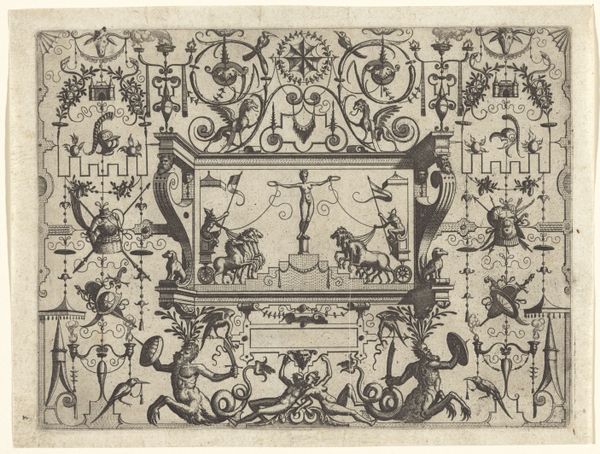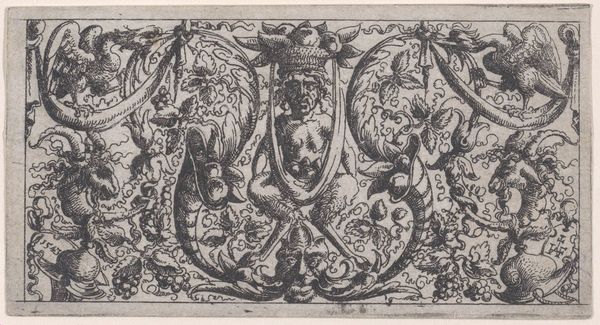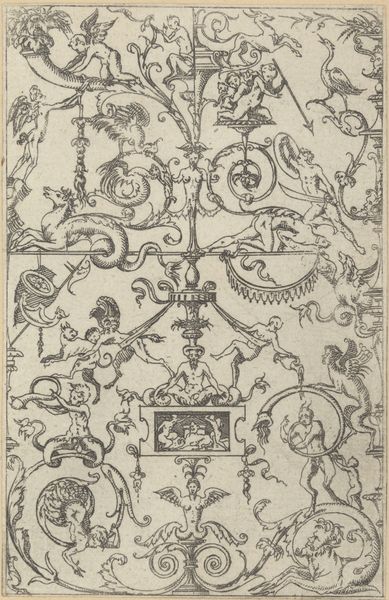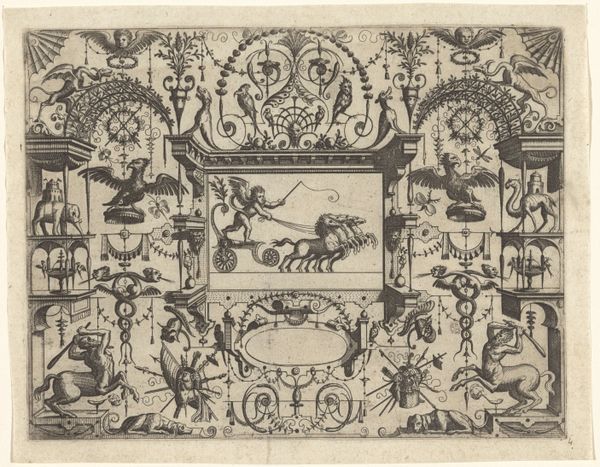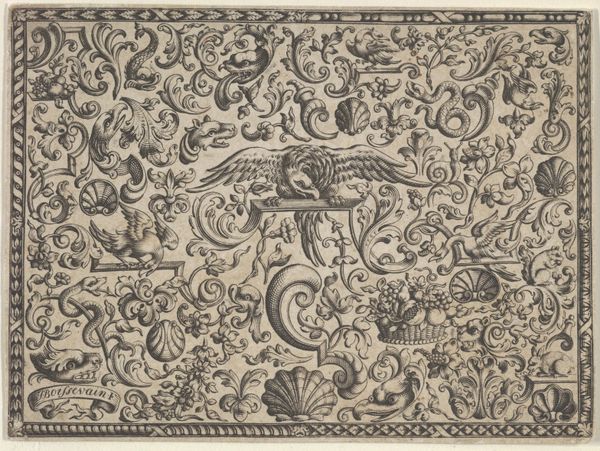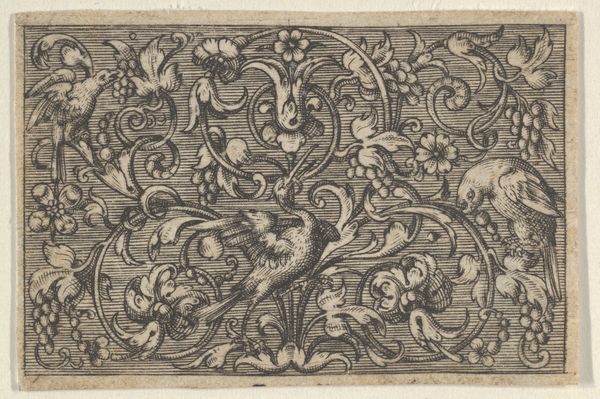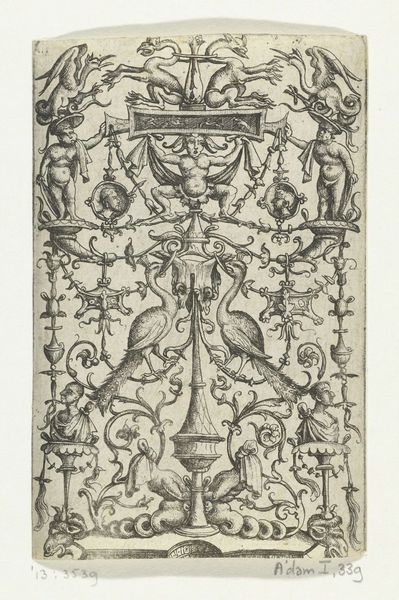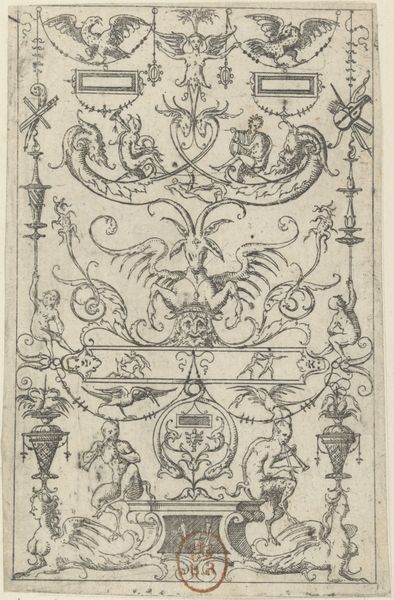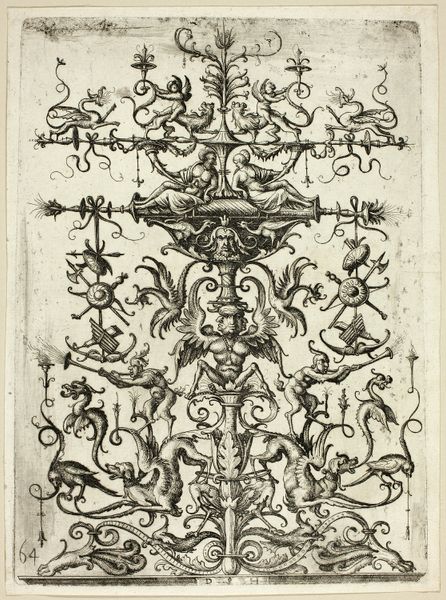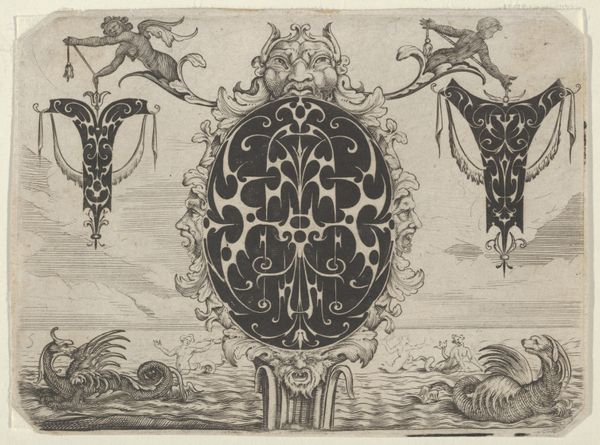
print, engraving
#
allegory
#
baroque
# print
#
figuration
#
line
#
grotesque
#
engraving
Dimensions: height 72 mm, width 93 mm
Copyright: Rijks Museum: Open Domain
Curator: I find the visual density immediately striking. It's busy, intricate. I'm drawn to how it fills the entire picture plane, almost claustrophobic in its abundance of detail. Editor: That's a great point. This is a print titled "Panel with Grotesques" made sometime between 1603 and 1650 by Matthäus Merian I. Works like these were intended as templates for artisans to use in the creation of elaborate decorations. Looking through a contemporary lens, the panel invites us to consider the social and cultural role of ornament and its accessibility. Ornament becomes a vehicle to democratize wealth, making these forms accessible. Curator: Democratization of wealth is an intriguing concept. There are indeed recognizable scenes and tools and other imagery presented, but what is particularly grabbing my attention is the sheer number of strange fantastical hybrids displayed with everyday objects. There is the grotesque element you referred to previously, which carries inherent sociopolitical commentary, making the everyday strange. Editor: Exactly. These images became particularly widespread during the Baroque period; its revival points to the influence of Renaissance ideals that celebrated the imagination and inventiveness in opposition to the constraints imposed by religious doctrines. But consider, too, how prints like this shaped the cultural landscape, dictating taste and promoting certain styles over others. Who decides what constitutes 'good' ornament? Curator: Well, if we delve deeper, what’s even more curious about the ubiquity of images like this and their popularization is how certain bodies and forms gain preference and become accepted within the dominant Western, capitalistic aesthetic—and by extension, how particular narratives, peoples, or bodies come to be delegitimized and “othered” if they differ from said forms. In this case, through such heavy stylization. Editor: I see what you mean, yes. Thinking about this from a political point of view is a particularly vital point as we re-examine the role of images in the contemporary moment. The availability of something like this "Panel with Grotesques" does not negate the power structures involved in creating and disseminating its imagery. Curator: Yes, and the implications extend far beyond simple aesthetic considerations, too. When images are imbued with these subtle hierarchical structures, our interpretations of the art become far more multi-faceted, far more intersectional. Editor: Absolutely. Reflecting on it now, this print underscores the importance of looking critically at even seemingly innocuous art, acknowledging its potential to reinforce existing inequalities. Curator: Agreed. A great reminder of the ever-present sociopolitical landscape of the works that continue to permeate our world today.
Comments
No comments
Be the first to comment and join the conversation on the ultimate creative platform.
